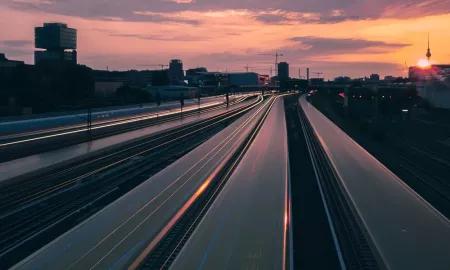Due to the COVID-19 pandemic, an increased amount of people are now at home with buildings and structures sitting idle across the UK. With some workplaces temporarily shut, SOCOTEC’s Health and Safety team discusses some key actions to safeguard idle properties.

When considering how best to manage an idle building, it is important to recognise that they are vulnerable to a series of risks, such as:
- Electrical fires
- Arson
- Water damage
- Vandalism.
All applicable risk assessments for the building should be reviewed and updated to accommodate the change in circumstances relating to the building being unoccupied. Health and safety risk assessments should consider what hazards might arise while the building is left unoccupied.
It is important that the insurance company is made aware of the change in use of the building as soon as you know that the building, or even just part of it, is to become idle or disused. Discussions regarding amended risk assessments, maintenance and new management arrangements should be held and recorded.
Fire risks
According to statistics published by the National Fire Chiefs Council, arson accounted for 50.5% of all fires attended in 2017/18 by Fire & Rescue Services in the whole of the United Kingdom (of the 213,782 fires attended, 108,024 were deliberate). This is the largest single cause of fire attended by Fire & Rescue Services.
Idle buildings are at increased risk from arson. Arrangements to prevent and reduce the risk of arson attacks include:
- Redirecting mail
- Sealing up any letter boxes
- Ensure that all windows and doors have secure locks, and these are used
- Board up all accessible windows with secure panels
- Secure access ladders.
There will be an opportunity to review the fire loading associated within the building and measures to remove any combustible items (including fixtures/fittings) that might provide fuel for a fire. Consideration of de-fuelling the idle building should be made. Any oil tanks should be emptied, valve hoods fitted to external LPG tank controls should be closed and locked shut and measures to keep the tank stands clear of vegetation should be made.
Waste management
Additional measures to address waste management risk should include ensuring that external waste bins are emptied and securing them well away from the building. Skips (ideally a totally enclosed and lockable all-metal type) should be removed at the earliest opportunity and, until then, placed as far away from buildings as possible (at least 10 metres away).
Isolating gas, electricity and water resources
Other than where they’re required for fire, security, safety or environmental systems, if possible, the gas, electricity and water sources which supply the building should be isolated.
Water supplies, except those for operational fire sprinkler and other fire suppression systems (that you have checked are safe to leave on) should be drained down and isolated.
Essential electrical installation should be inspected and tested by a competent electrical contractor as per existing arrangements
Where sprinkler stop and drain valves are secured in their normal working position by leather straps and padlocks, these should be changed for padlocked steel chains
Make sure that unauthorised vehicles can’t easily access the site.
Security
For larger sites where security guards have been provided, but no existing CCTV system is available to help them monitor the grounds, consider hiring a portable CCTV or movement detection system to aid them.
Inspections of the premises should be scheduled, and any issues and deficiencies should be dealt with in a timely manner. Removing graffiti and repairing acts of vandalism reduces the potential for further issues to occur. Arrange for unguarded buildings (which are in a safe condition) to be visited at least weekly, so that their condition and security can be checked.
Lone working arrangements should prohibit personnel visiting buildings on their own. As part of the site’s health and safety risk assessments, the risks to 'lone workers' should be reviewed and control measures implemented where this risk cannot be eliminated. Measures should be in place to control and record the access and egress of visitors. These arrangements should identify which individuals have authorisation to access to the premises and for what purpose.
Energy conservation
Consideration should be given to conserve energy and costs where gas and electricity supplies cannot be isolated:
- Turn off or adjust all local controls within heating and cooling systems to meet the new demand
- Check/adjust on and off set times for Building Management Systems
- Turn off all electric appliances – do not leave on standby
- If safe, continue providing actual gas and electricity meter readings to energy supplies (otherwise estimated bills will be issued).
How can SOCOTEC help?
From fire risk assessments and waste management to health and safety audits and energy conservation, SOCOTEC is well placed to offer a broad range of services to support your organisation in all aspects of idle building management, helping to ensure your safe and compliant return to work when the time is right. Our bill validation service is just one area in which we are helping our clients, informing them of the properties that are continuing to consume energy during the ongoing pandemic and which is proven to reduce our clients' energy costs for vacant properties.
For further information about how SOCOTEC can help your organisation with idle building management, get in touch.
Does your business require support with COVID-19 compliance?
Our Business Ready programme has a wide range of options that can be personalised to your individual requirements.

You might also like





Add new comment